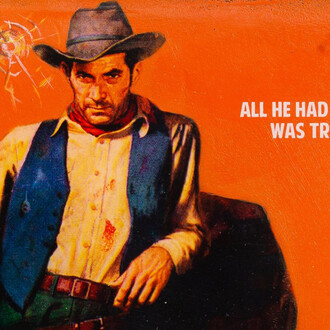Lora Reynolds is pleased to announce Animalia, an exhibition of sculpture, drawings, and a mural by the Haas Brothers—their first show at the gallery.
The Haas Brothers’ cartoon drawings—of cuddly, bug-eyed animals with conspicuously (often oversized) humanoid genitals—are the connective tissue between all their sculptures, furniture, and paintings. Whether a furry chair with horns and feet, a ceramic vessel that looks like an underwater coral with wiggly tentacles, or a brass stool with knock-kneed legs, each object the Haas Brothers make is a goofy character from a bizarre, technicolor, alien ecosystem. Theirs is a utopian world of sexual freedom, shamelessness, gender/class/racial equality, and fun.
The Beasts can be armchairs, daybeds, or basketball-sized sculptures made from shaggy animal fur. Although faceless, their expressive ebony horns, polished bronze hooves, and textured coats give each its own endearing personality. Sometimes they have shiny bronze scrotums or vulvas tucked behind the hair on their backsides. The Beasts are friendly, silly, and seem sentient enough that if you tickled one it might squeak and squirm and offer you its belly to rub.
The Accretions are colorful ceramic vases that have a puckered slit or a long neck that stands erect or flops to the side. Often simultaneously phallic and labial, the vases also recall coral, fungi, and cave formations. The Haas Brothers invented the process that gives the Accretions their characteristic texture. By scoring the sides of a clay vessel, brushing it with slip, letting it dry, and repeatedly brushing on more slip—tiny tentacles/fingers/cilia (the brothers call them “petals”) grow like hundreds of miniature candles dipped into molten wax over and over again.
The Hex stools, tables, and sculptures, with their undulating surfaces, knobby legs, and chunky feet, are covered in grids of hexagonal brass tiles—a design inspired by honeycombs. Bees build with hexagons because the shape is so efficient—a hexagonal grid is the best way to divide a surface into regions of equal area with the least total perimeter. Which means bees can minimize a comb’s waxen structure and maximize the honey it contains. Similarly, when tiling with hexagons, the Haas Brothers can use less grout and more gleaming brass than if they used triangular or square tiles. Looking at the Hex pieces, one sees watery, golden reflections moving over a static and complex (but barely discernible) framework of hexagons.
The visual experience provided by a Hex sculpture is a metaphor for the central idea behind all of the Haas Brothers’ work: in becoming who you are, no matter how rigid expectations may seem—those of parents, peers, or society in general—you must be true to yourself, and boldly so. Identity is fluid. It can (and perhaps should) continuously shift and expand throughout a lifetime.
The Haas Brothers want to help people break through whatever barriers are preventing them from reaching their full potential and authentic selves. Sometimes the brothers do this directly, as in their recent collaboration, Afreaks, with a group of underprivileged Xhosa craftswomen from South Africa. But they are always indirectly dismantling oppressive hierarchies—making objects that celebrate individuality, combat prejudice, and bring us together with laughter.









![Betsabeé Romero, Al reverso de la pista [On the other side of the track], exhibition view. Courtesy of Blanton Museum](http://media.meer.com/attachments/e34357b533edcabd157cd23df35e2397c276a6bf/store/fill/330/330/a18279d745d1c0fe495891cad1f670b7d648211d009bb1e394576baaaa61/Betsabee-Romero-Al-reverso-de-la-pista-On-the-other-side-of-the-track-exhibition-view-Courtesy.jpg)



